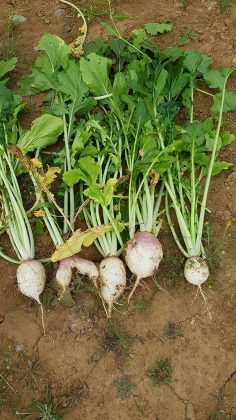Summer brassicas in lactating dairy cows diet
The animal Article of the Month for August is “Milk production responses and rumen fermentation of dairy cows supplemented with summer brassicas” by M. Castillo-Umaña et al.
Perennial pastures are the main feed for dairy cows in countries such as New Zealand, Australia, England, Ireland, France, Chile among others; mainly because milk production systems based on pasture are more cost effective than indoor systems based on concentrate.
 In humid temperate regions, pastures are characterized by their uneven patterns of growth across seasons throughout the year. This results in relatively high pasture growth during spring and autumn; and low growth (and thus pasture availability) during winter (due to low temperatures) and summer (due to water shortage). It has been suggested that due to global warming effects, periods of low rainfall will be extended and summer drought will get more severe, diminishing pasture availability and quality during summer. Thus, there is a need to find forages suitable for dairy cow feeding during summer. Forage brassicas, such as summer turnip (Brassica rapa) and forage rape (Brassica napus), are used as supplementary crops during summer. However, studies with lactating dairy cows fed these forages are limited and report inconsistent productive responses. The aim of this study was to determine dry matter intake, rumen fermentation and milk production responses of dairy cows in mid-lactation supplemented with summer turnip or forage rape. The inclusion of forage brassicas had no effects on milk production (24.2 kg cow/day) and composition (average milk fat and protein 43.2 and 33.6 g/l respectively). Dry matter intake was 0.98 kg and 1.12 kg lower for cows supplemented with forage rape and summer turnip, resulting in a greater feed conversion efficiency compared to a silage + concentrate diet (without brassica). The concentrations of total short-chain fatty acids in rumen contents increased with summer turnip supplementation, whereas estimated microbial nitrogen flow was increased with forage rape. Based on the hematological measures, the inclusion of summer brassica forages did not affect the health status of the animals. These results indicate that mid-lactation dairy cows fed brassicas are able to maintain production despite the reduced intake, probably due to improved rumen fermentation and therefore nutrient utilization.
In humid temperate regions, pastures are characterized by their uneven patterns of growth across seasons throughout the year. This results in relatively high pasture growth during spring and autumn; and low growth (and thus pasture availability) during winter (due to low temperatures) and summer (due to water shortage). It has been suggested that due to global warming effects, periods of low rainfall will be extended and summer drought will get more severe, diminishing pasture availability and quality during summer. Thus, there is a need to find forages suitable for dairy cow feeding during summer. Forage brassicas, such as summer turnip (Brassica rapa) and forage rape (Brassica napus), are used as supplementary crops during summer. However, studies with lactating dairy cows fed these forages are limited and report inconsistent productive responses. The aim of this study was to determine dry matter intake, rumen fermentation and milk production responses of dairy cows in mid-lactation supplemented with summer turnip or forage rape. The inclusion of forage brassicas had no effects on milk production (24.2 kg cow/day) and composition (average milk fat and protein 43.2 and 33.6 g/l respectively). Dry matter intake was 0.98 kg and 1.12 kg lower for cows supplemented with forage rape and summer turnip, resulting in a greater feed conversion efficiency compared to a silage + concentrate diet (without brassica). The concentrations of total short-chain fatty acids in rumen contents increased with summer turnip supplementation, whereas estimated microbial nitrogen flow was increased with forage rape. Based on the hematological measures, the inclusion of summer brassica forages did not affect the health status of the animals. These results indicate that mid-lactation dairy cows fed brassicas are able to maintain production despite the reduced intake, probably due to improved rumen fermentation and therefore nutrient utilization.
 The fact that supplementation with summer turnip and forage rape had no effect on milk production and composition is an advantage for dairy farmers, as it may increase farm profitability. The replacement of grass silage and commercial concentrates with brassicas reduces feeding costs and increases profitability. It also contributes to diversification of the forage base for dairy production in temperate grazing systems.
The fact that supplementation with summer turnip and forage rape had no effect on milk production and composition is an advantage for dairy farmers, as it may increase farm profitability. The replacement of grass silage and commercial concentrates with brassicas reduces feeding costs and increases profitability. It also contributes to diversification of the forage base for dairy production in temperate grazing systems.
The animal Article of the Month for August “Milk production responses and rumen fermentation of dairy cows supplemented with summer brassicas” is free for a month.
Authors: M. Castillo-Umaña, O. Balocchi, R. Pulido, P. Sepúlveda-Varas, D. Pacheco, S. Muetzel, R. Berthiaume and J. P. Keim
The animal Article of the Month is selected by the Editor-in-Chief and is freely available for one month. View the recent selections
All photos courtesy of JP Keim




